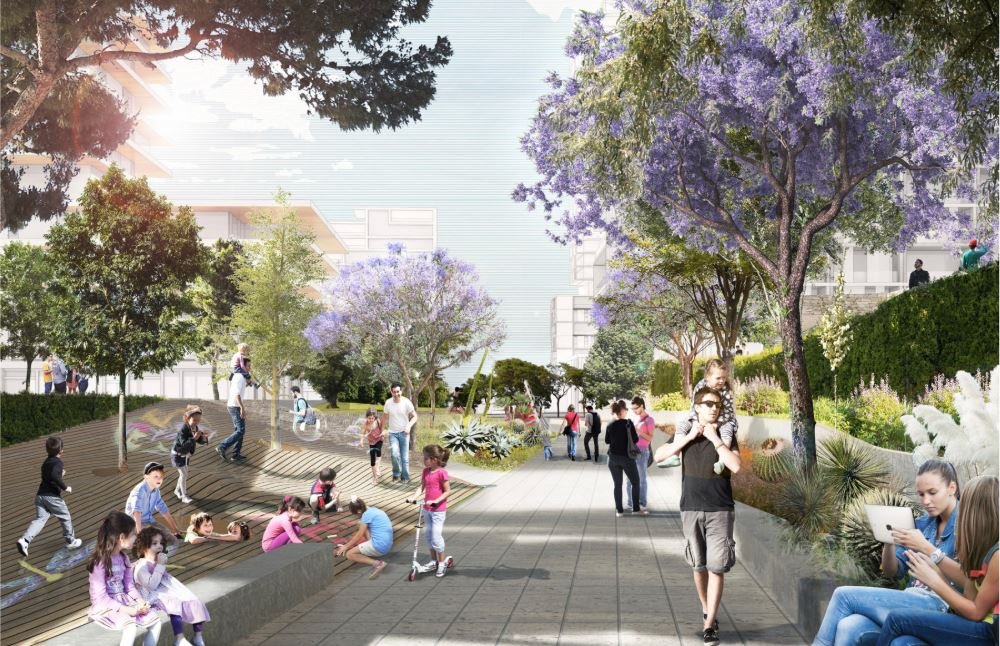Las Salinas Urban Regeneration Framework – Viña del Mar, Chile
Las Salinas represents a bold new approach to urban planning and design in Viña del Mar, Chile, where the transformation of a brownfield site becomes a catalyst for ecological and urban regeneration. Commissioned by a forward-looking private client committed to sustainable development, the project spans approximately 30 hectares of former industrial land on the city’s iconic seafront. Designed by Sasaki, the project is currently in active planning and design development, with phased implementation underway.
Once envisioned as an extension of the 19th-century Valparaíso metropolis, Viña del Mar rose to fame as the Garden City of Chile, with its tree-lined boulevards and formal parks. However, in recent decades, the city has suffered from ecological degradation and car-dominated growth that have compromised its quality of life. Sasaki’s services in urban planning, landscape architecture, and community engagement sought to reverse this trend by unlocking the site's potential to redefine Viña’s trajectory.
The Las Salinas framework transcends the site’s physical boundaries to restore local ecology, improve coastal access, and re-engage the community with a resilient public realm. It reconnects historically marginalized hillside communities—such as Santa Inés—to the seafront via new pedestrian networks, public elevators, and a new Community Center offering youth programs, job training, flexible public spaces, and a library.
At the shoreline, the Central Park becomes a civic gesture to the city, framed by cultural and public uses that promote inclusion and social exchange. The framework envisions a compact, mixed-use neighborhood that reduces car dependence by introducing civic, residential, educational, retail, and office uses woven into a fully accessible and animated ground plane.
Informed by extensive research into the Chilean coastal landscape, the plan takes a regenerative, systems-based approach to ecological infrastructure. Stormwater management, nutrient cycling, carbon sequestration, microclimate regulation, and pollinator corridors are embedded into the urban fabric. Native and structurally diverse planting strategies respond to the site’s varied microclimates, while the restoration of the 19N Ravine exemplifies the integration of natural systems into an urban environment.
A series of linear and connective parks, including a green corridor parallel to Libertad Avenue, anchor the site’s public realm, drawing residents and visitors into a richly layered urban ecosystem. This open space network encourages active lifestyles, ecological literacy, and cultural expression through playscapes, terraces, and pedestrian pathways.
Las Salinas stands as a model for socially driven, ecologically restorative urban development in Chile. Its success is rooted in an unprecedented and ongoing engagement process—a series of collaborative Urban Dialogues between the design team, community members, and public officials. This process fostered a shared vision and systemic thinking around Viña’s future, positioning Las Salinas as a legacy project for the city and a benchmark for resilient coastal redevelopment.







































